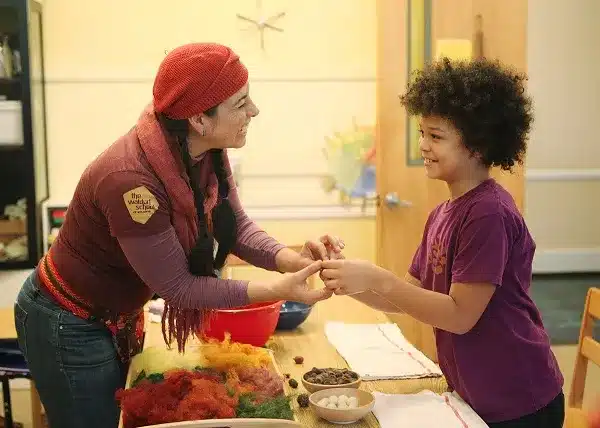We have dreams and hopes for our children that often extend beyond mimicry of our own lives. We hope they will do more, be more, and we define these “mores” in myriad ways. Yet the collective consciousness of “better” for a new generation persists, whether it is a desire for a better standard of living, better education, or a better world.
Throwing a wrench into this paradigm is the powerful force of modeling in learning. Children learn through imitation. It can be as simple as wearing a seatbelt. Parents who wear them have children who wear them. Or it can be as complex as using modeling as a teaching technique for self-efficacy and competence in reading and writing.
We know the power of imitation to be intuitively true as we often fall into the patterns of our upbringing. But it scientifically bears out as well. In fact, a recent study of indigenous children in Australia uncovered an important phenomenon in cognitive modeling.
Children in this study were found to “over-imitate,” meaning simply that they modeled all adult behavior in a teaching task regardless of whether it seemed to drive toward a purpose. The purpose in this case was opening a box. The children were shown a convoluted and complex method of opening the box and they imitated it exactly when given the task on their own.
Other primates, however, will not model tasks that are obviously irrelevant to the end goal, but children will. This has far-reaching implications for culture and learning. Children will not just learn from the presented end goal of actions, but take strides to imitate the process as well.
This is an amazing reinforcement of why “Do as I say and not as I do,” is such a colossal learning and parenting-style failure. Children, it seems, are hard-wired to do exactly as we do, in all aspects, without reference to the teacher or parent’s desired end.
The classroom is often overlooked as an essential place for modeling. Traditional classroom structures place the teacher in front of student vessels, imparting facts that will fill them and enhance test performance and GPA. Much less thought is given to what teachers are always modeling for their students, not only in regards to what is taught but also how it is taught and why, and how they present themselves as human beings.
This can be a sobering prospect to an overwhelmed teacher who may be more reactive than proactive in classroom management, but it is an area that needs more attention. For example, modeling an open and receptive environment for questions, handling misbehavior with compassion, seeing failure as learning, and respecting varying aspects of intelligence can have life changing effects on students.
In Waldorf Education, much credence is given to the “inner work” of the teacher. As Rudolf Steiner said in his writings, “You will not be good teachers if you focus only on what you do and not upon who you are.”
Steiner encouraged teachers to work on mastering mindfulness in thought, being proactive vs. reactive, balancing emotions in daily life, and finding goodness and connection throughout all living things. He believed that this work was more essential than the work of lectures and lesson plans. The science of modeling may well indicate that modern educators should agree.
Early childhood education in Waldorf, particularly, centers around the idea of worthy imitation. The Early Childhood teacher not only establishes the activities and rhythms of the day, but also embodies all she or he hopes to cultivate in the young child — an ever-present calm, soft and gentle ways of being, consistent kindness and generosity, and an ongoing movement toward purposeful work.
These character elements permeate Waldorf Early Childhood Education. One only needs to sit quietly for a time within a Waldorf Early Childhood class to be moved by its difference in character compared to more traditional settings.
This is not only important in the earlier years of students, however. As peers grow more influential, it may be tempting to diminish the importance of adult influences, but science shows us a different view. Even older children model their behavior to the adults in their lives more so than their peers. Unfortunately, the nature of adolescence often discourages openness in adults, who mistake growing independence as moral and emotional detachment.
As Gandhi said, “be the change that you wish to see in the world.” So it is the case with our children. If we want them to be generous, resilient, lifelong learners, we must encourage ourselves to be the same at home and in the classroom.
Photo credit: Waldorf School of Atlanta





